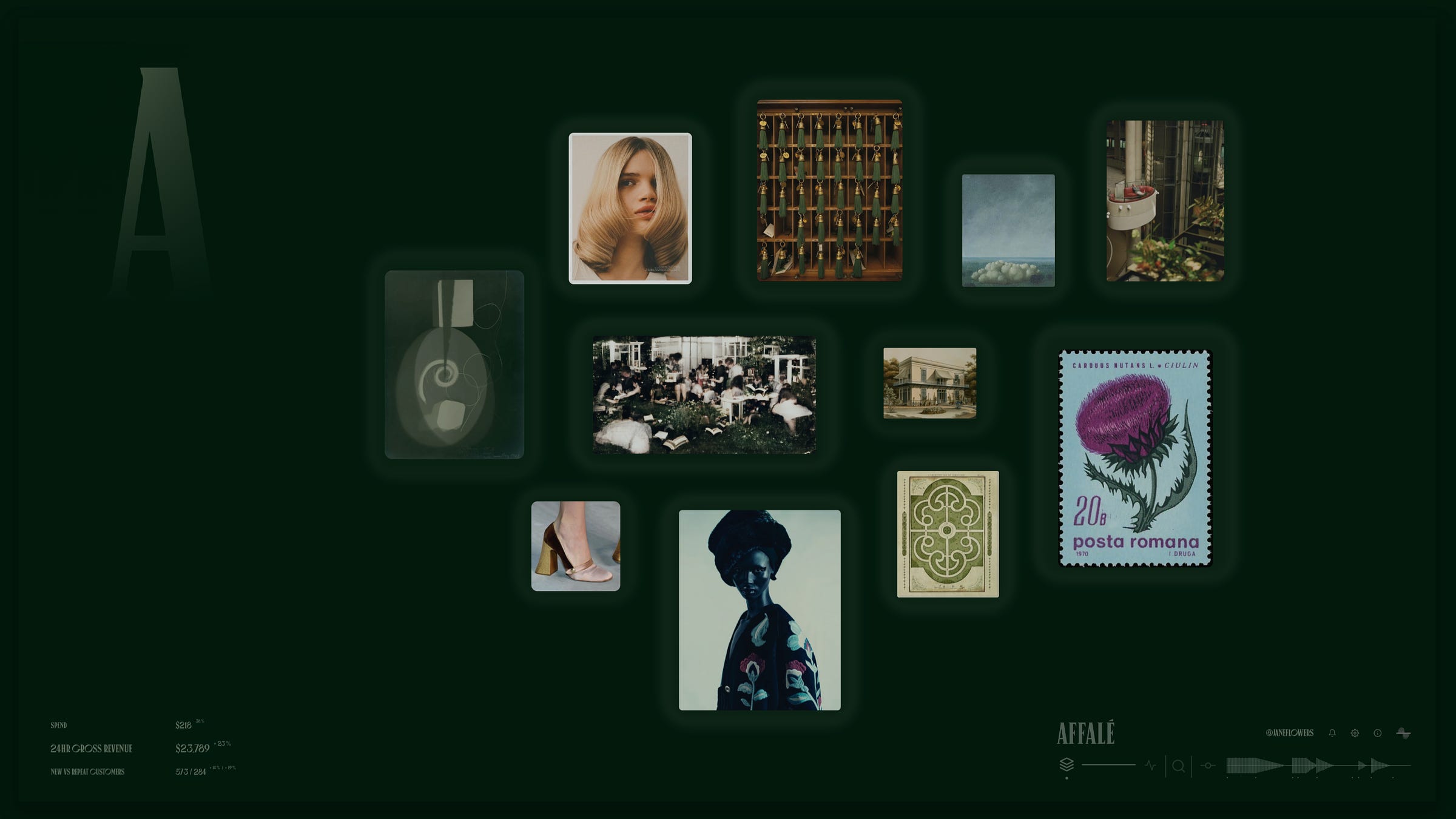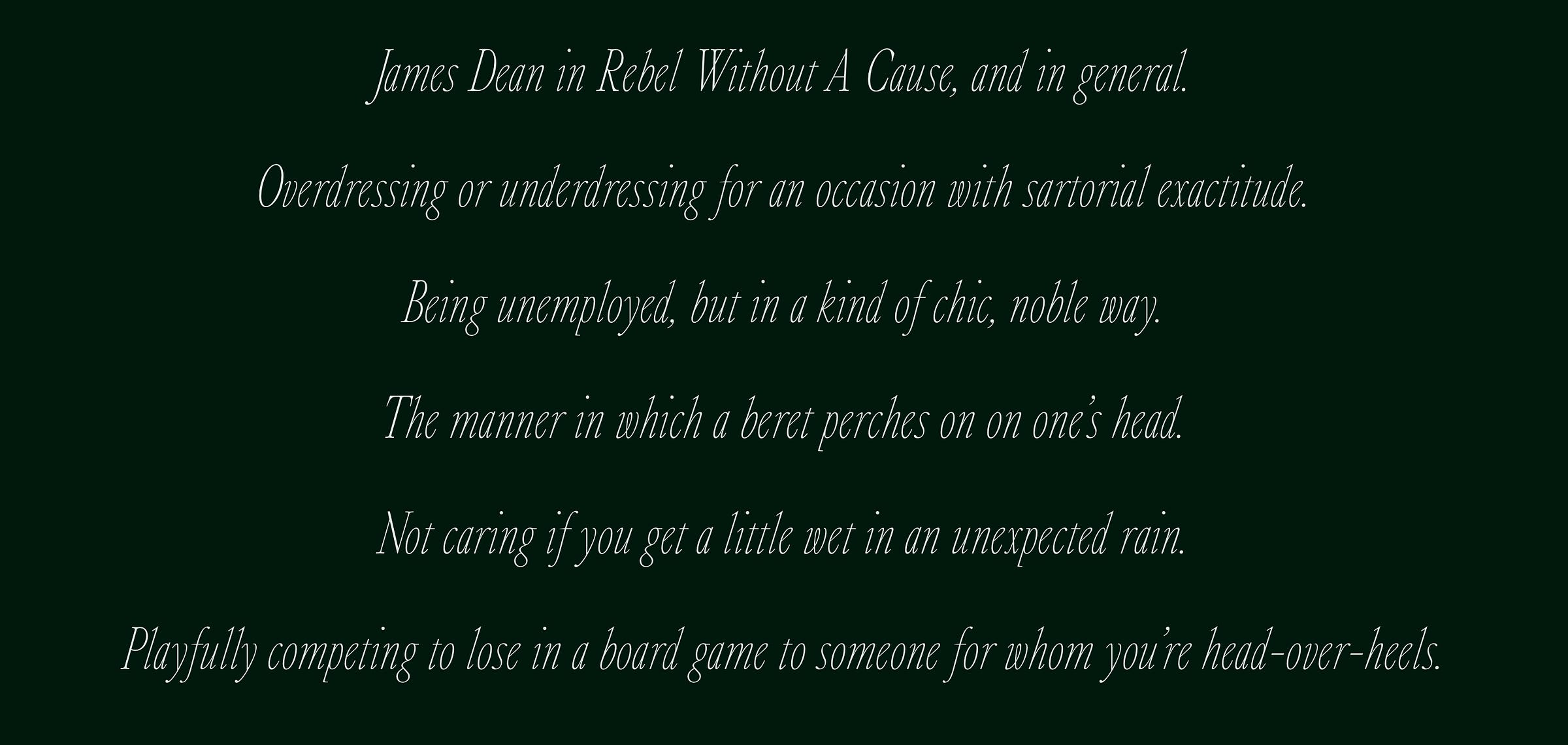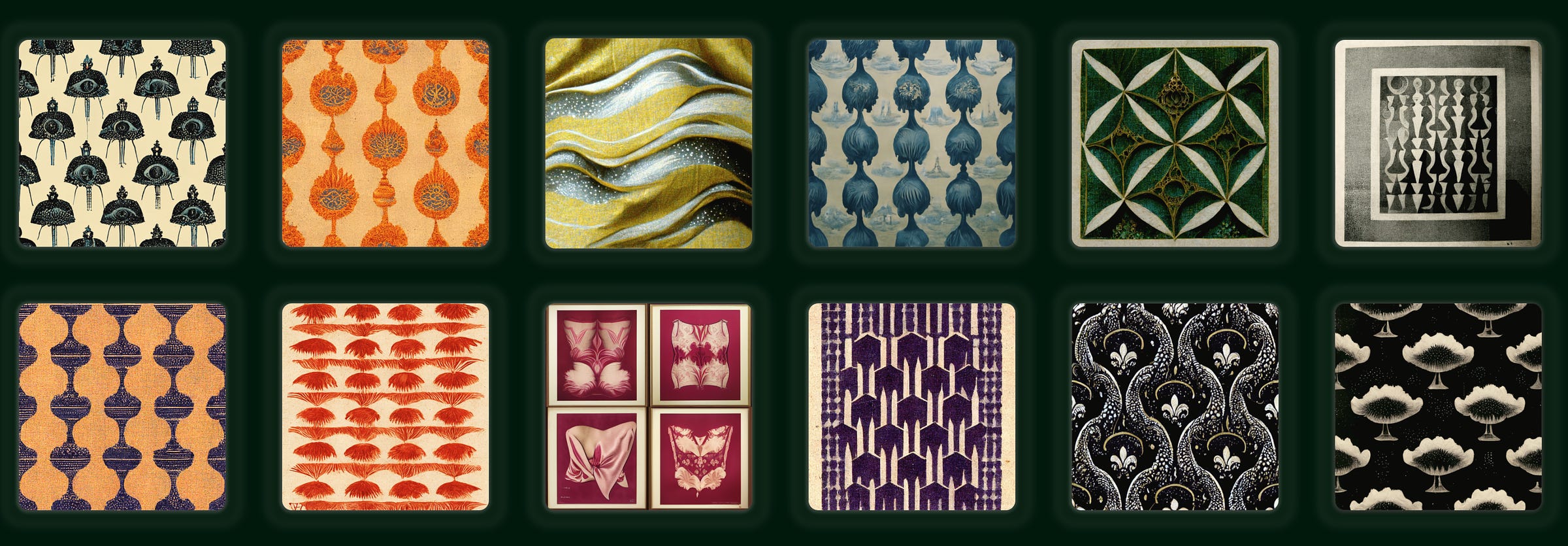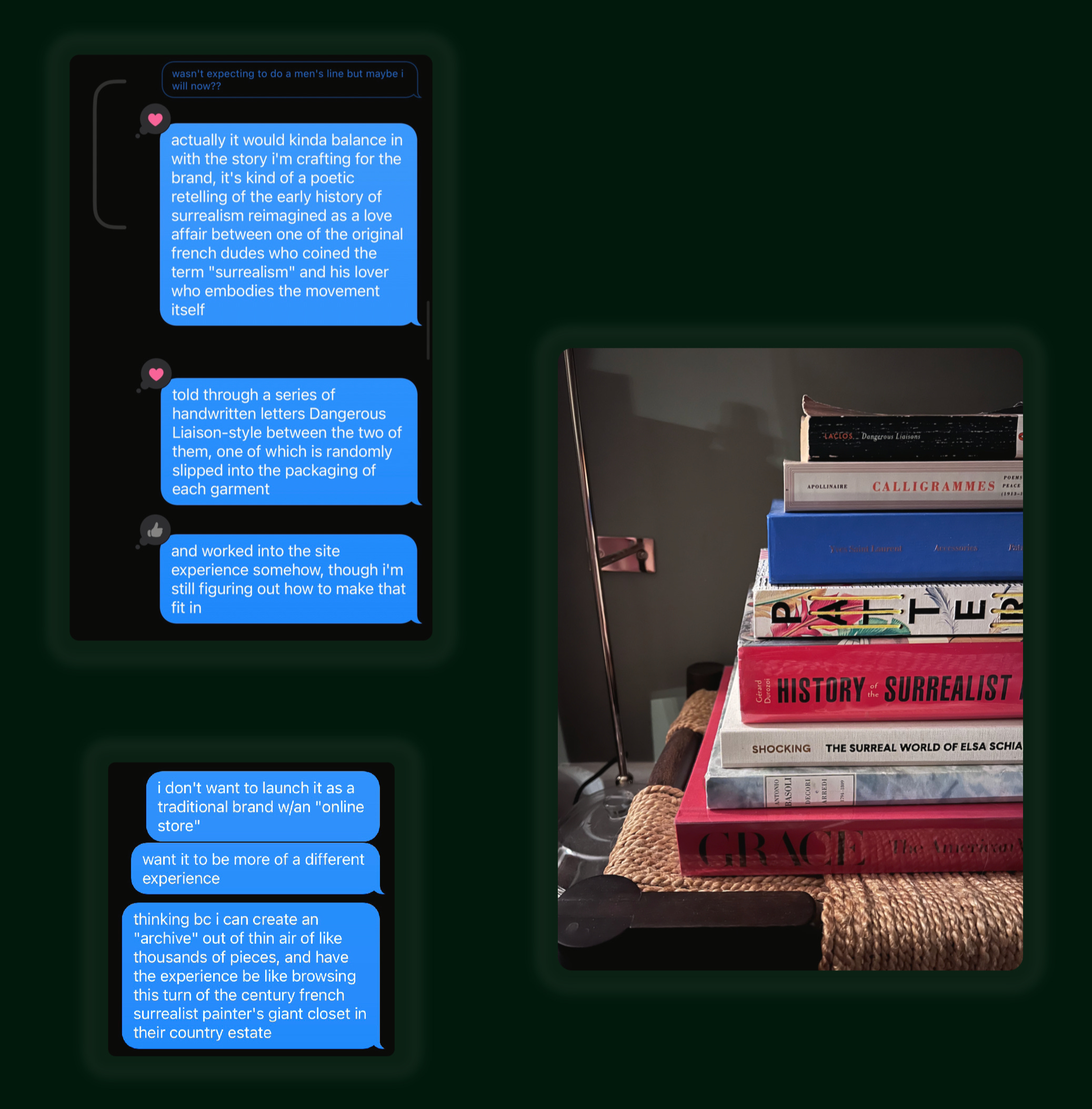What's in a name? And other adventures in branding...

Nominative determinism is the phenomenon by which an individual’s name is supposed to influence their life’s vocation. A charming idea, but we’re here to discuss my foray into fashion. Not floristry. So that’s one strike against it.
No, the destinal qualities of most citations of the term are broadly lacking. As is often the case, “causation” is but three correlations in a trench coat. You may laud the athletic prowess of Usain Bolt-As-In-Lightning; I choose to mourn the deferred glamour of Usain Bolt-As-In-Fabric. Save for cases that are quite literal (“…the Army had only one Major Major Major Major and did not intend to lose him by promotion…”), the humble aptronym is the more accurate term, detonating mere goodness of fit.
We want our names to mean things. We yearn for a significance so crushing, so heavy, that we fall through the earth. That’s why we fancy the turnkey je ne sais quoi of nominative determinism: why endure the drudgery of manifesting destiny, when you could simply cop out with the noun version instead? Meaning-making is hard. There’s an entire academic discipline that’s cropped up as a cope for how hard it is. They publish papers. I’ve been told there was even a movie.
But do you know who should really be spearheading the meaning-crisis-resolving? Brand designers. They’re all about to be put out of their jobs anyways, allegedly, it’s the dignified thing to do. Each and every day, not only do they make something out of nothing, they take the greatest pains to disguise it as nothing out of something. Clients’ egos are fragile; all they ask is merely that a brand designer understand their nascent business idea better than they do themselves, peer into its future, and would you graphically render that entire telos within the confines of 256x256 pixels, please?
In essence, it’s a reverse tarot reading. And as any brand designer will tell you, it’s quite an ontological snarl:
“Each time I unveil a new logo proposal to a client, I sense the yearning for that some enchanted eveningmoment: love at first sight, getting swept off our feet by the never-before-seen stranger across the dance floor. Tell clients, ‘Don't worry, you'll learn to love it,’ and they react like an unwilling bride getting hustled into an unsuitable arranged marriage.
“In fact, perhaps designers should spend less time reading Paul Rand and more time reading Jane Austen: after all, it is a truth universally acknowledged that a corporation in posession of a good fortune must be in want of a logo. Isn't it? Finding that one perfect logo is worth its own romantic novel.”
— Michael Bierut, The Mysterious Power of Context
So when people hear I’m launching my own brand, they inevitably ask, “What’s it called?”, and I trauma-flashback to all my failed brand identity presentations, hyperventilate, then remember I have the tools to deal with this, pull myself together, and author my own romantic novel on the spot. As I will do for you all now. Determinative nominism it is! I introduce you to my new brand, AFFALÉ:
affalé means slouch in French. I learned this after sliding my finger down the first dozen pages of my French-English dictionary, in search of the prettiest-looking word I could find. I think slouch is an adorable little rascal of a word. It has panache, moxie. It belies an attitude of conspicuous, campy rebellion, that will nevertheless dip into genuine arson every now and again, just to remind you it’s deadly serious. Free-associating slouch qua slouch, the following springs to mind for me:
And so on. There also happens to be a wonderful “philosophy of slouch” essay by Venkatesh Rao you should go read sometime, which contains sentences like this:
‘Learning is learning to slouch in new ways; expanding your consciousness by discovering new behavioral ground to sag into; acquiring new modes of control that you can then learn to let go.’
Groovy. Later on, I learned affalé was a rather mediocre translation for slouch: it’s actually closer to the adjective slumped. Whatever. How very slouch of me, to be so blasé about doing due diligence on my own brand name! Besides, I had found what I was looking for: a lovely collection of six or fewer letters, meaningless yet with vague connotations of sophistication to unsuspecting Anglos, and an available domain name. And (in my opinion) a match made in typographic heaven.
AFFALÉ (always in all-caps) it is. It has, as the identity designer par excellence would say, “the pleasure of recognition, and the promise of meaning.” It's a perfect canvas for...what, exactly?
Of all the potential places on God’s AFFALÉ Green© Earth one might adopt as their visual-spiritual home, I consider the Menil Collection’s exhibition of its Surrealism holdings to be mine. A very close second goes to my old lunch-hour haunt La Belle Époque, a shop that sells vintage, turn-of-the-twentieth-century posters at Greenwich and Eighth. Ask me tomorrow, those rankings might be swapped. My give-me-your-brand-vibe-in-five-words-or-fewer elevator pitch has alternated between Belle Epoqué Surrealism, and less often, Old World-World’s Fair.
These taglines were literally the first prompts I fed Midjourney, and the resulting prints were more or less exactly the I’ll-know-it-when-I-see-it gestalt I was after:
Still, a sheen of vapid Francophillia alone does not a novel brand make, least of all in fashion. And the Surrealist torch is kinda inalienably Schiaparelli’s⏤there’s positively no way you can out-surreal Dalí ('Dalí!’) himself. So ‘Belle Epoqué Surrealism’ is a starting point, not a destination.
I’ve been mulling this over for almost a year’s time now. Positioning a new brand is hard. I’ll bet you every brand pitch to a VC, like ever, has involved some kind of smarmy paradoxical premise (“Accessible luxury!” “Elevated basics!”), to which the brand’s existence serves as the ineffable resolution. (Whichever of the two Don-Draper-Selling-Stuff memes you’re picturing right now says volumes about you.) One can hope this genre of branding is now gone with the low interest rates. If the Everlane era taught us anything, it’s this: the more cosmic the dichotomy, the more boring the brand.
What about luxury? As the saying goes, small brands talk about ideas, great brands talk about people. The folks down-market are just starting to pick up on this (“...The realization that producing culture is about producing types of personhood is the central issue of this new cultural economy,” h/t Toby Shorin), but luxury has always peddled the illusion that you are the main character, in a way that is (somehow, and this is their magic) irreducible mere economics, which are main-character-energy-washed:
“There’s a shift that I’m sensing in these clothes—a transformation that began last fall, from the forensic study of global richsterdom of Michele’s earlier collections to a "Hooray for Hollywood"-inspired pursuit of treating yourself like a character. Many of the models in zigzag dresses and skirt suits and lusty fur coats, with their strong antiheroine shoulders, looked like angry, nasty, crazy women ready to kill for love or money. (Probably both.) The clothes had a polish and strength designed to prepare you for the role of your life, rather than some slate of consumer experiences.”
— Rachel Tashjian, The Main Character Energy of Alessandro Michele’s Gucci
Cracking this particular code is what I’m after with the branding for AFFALÉ. All adults, deep down, want to live forever within their own fairy tales, but many are willing to accept an idiosyncratic wardrobe as a consolatory talisman. To offer them such a thing is the opposite of cynical.
But how does a new brand pull this off? Storied luxury brands are, well, storied! You, too, can become a cultural institution, if you can manage to stick around in the upper class’s peripheral vision for a century or so. Slipping into a garment imbued with that top-heavy of a legacy feels a little like coming home to your castle after many months of globetrotting. That sort of feeling’s proof-of-work can’t be faked.
What about newer brands? Zimmerman. Cult Gaia. And eventually Etro, Altuzarra, and Khatie. All peer brands of AFFALÉ (I’m ambitious, can’t you tell?). With the exception of a little jolt from Zimmerman’s frills-upon-frills, I don’t really feel much of an eternal-legacy-aura from any, though both Khatie and Cult Gaia are trying very hard in this department (having the word “cult” in your name kind of gives up the ghost).
What if there were a shortcut? What if your brand could provide a readymade fairytale for its audience to live vicariously through? What if you could harness technology in order to tell that story in new, heretofore unimaginable ways? Slowly, my angle of attack emerged: AFFALÉ needed a bona fide narrative to pair with the clothes. Not the Grace-Coddington-vaguely-gestures-at-Alice-in-Wonderland kind. Something much more:
I won’t bore you with the details yet, mostly because I haven’t figured them all out—building an actual, working, revenue-generating brand is a bit more fundamental on the hierarchy of needs. But the story is an amalgam of the history of Surrealism itself, the life history of some of its early proponents, a complex Dangerous Liasons-esque love affair, my own life story, and a bunch of other things. One of my early brand site sketches was just a made-up newspaper that covers the globetrotting exploits of “Mme. AFFALÉ”:
It’s truly getting out of hand. I can’t wait to show it to you. But I’ll cut things short here for now, because I have more reading and brand-building to do...





